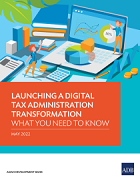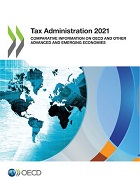Digital identity
As tax administrations have sought to enhance the delivery of a wider range of secure services through digital means, for example through taxpayer portals, more secure methods to identify taxpayers have been developed based on unique digital identities of their customers.
Secure identification is key to the efficient functioning of modern tax administrationsThe secure identification of taxpayers is key to the efficient functioning of modern tax administrations allowing the matching of administration processes (communication, tax return filing, incorporation of other data sources, self-service options, etc.) to individual and business taxpayers. To facilitate the identification of individuals and businesses that are, or may be, subject to tax obligations, tax administrations put in place registration processes and databases, so called ‘registers’. To ensure the accuracy of the registers and to streamline internal automated processes across the administration, in particular matching data to taxpayers, many jurisdictions have issued tax identification numbers (TINs) or equivalent unique identifiers. Learn more about the use of identification numbers by tax types for a number of tax administrations. |
What is a digital identity?For the purpose of the survey that was used to gather information for this website, digital identity was defined as ‘an electronic representation of an individual or business which enables them to be sufficiently distinguished when interacting online. The digital identity includes attributes which are bound to a credential that is used to authenticate the individual or business.’ |
Digital identities allow the secure access of digital services
With technological advancements resulting in an increasing taxpayer demand for the delivery of services through digital means, tax administrations had to ensure the secure identification of taxpayers in the digital world. For this purpose, tax administrations developed unique digital identities of their customers to allow them to access a range of digital services, for example filing returns online and making tax payments. Please click here for more about the provision of online services by tax administrations: Taxpayer Touchpoints.
Digital identities provide wider opportunities than just in tax administration and can enable different parts of government and third parties to work together and allow the same digital identity to be used in interactions, domestically and across borders. As a result, an increasing number of governments are putting in place government-wide digital identity strategies, encompassing a large variety of government services, and tax administrations have an important role to play in this.
Digital identity
Note: To understand fully the information included in this map, users are advised to look at the source data tables and the original survey question as some of the self-reported data may not give the full picture and may need to be looked at in the wider context of the survey.
Data tables
The following tables provide details around the adoption of digital identities by tax administrations, including their coverage and authentication methods, required for taxpayers to access digital services. They contain the information for tax administrations that have participated in the global survey on digitalisation of tax administrations.
|
Digital identity usage and coverage |
These tables provide an overview who provides the digital identity that individual and business taxpayers can use to access secure digital services, whether in case of multiple digital identities those are interoperable as well as the estimated percentage of taxpayers that use the digital identity to access tax administration services. |
|
Digital identity structure and registration |
These tables give details on the structure and characteristics of the digital identity used by individual and business taxpayers, including whether (and if so which) industry, international or other framework was adopted for the development of the digital identity solution, the minimum data set that is combined to establish the digital identity, and the process of receiving a digital identity. |
|
Authentication |
This table holds information about the authentication methods applied to verify the digital identity when used online. |
|
Authorisation and innovation |
This table contains information on whether taxpayers can authorise third parties to access secure digital services, and whether the solution underlying the digital identity system makes use of emerging and innovative technologies. |
Further information
Related Documents




